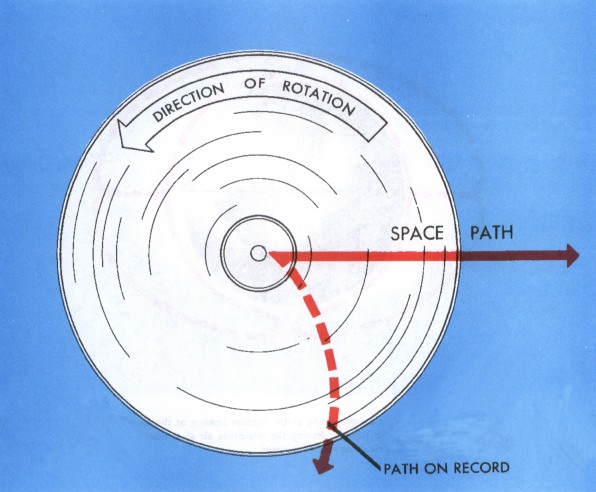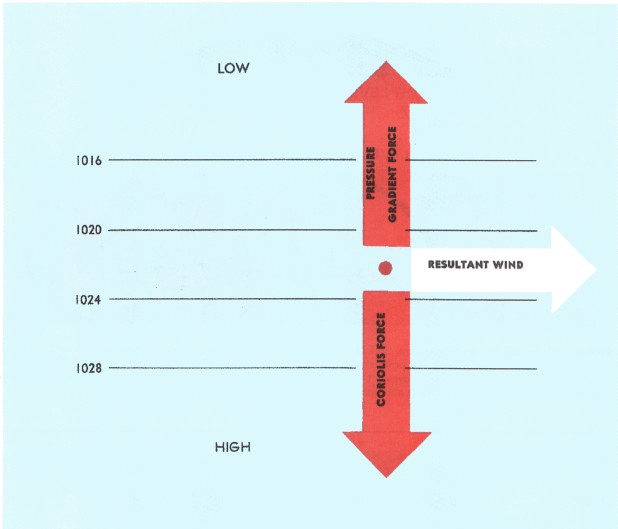Aviation Weather
full text of the classic FAA guide
CORIOLIS FORCE
A moving mass travels in a straight line until acted on by some outside force. However, if one views the moving mass from a rotating platform, the path of the moving mass relative to his platform appears to be deflected or curved. To illustrate, start rotating the turntable of a record player. Then using a piece of chalk and a ruler, draw a “straight” line from the center to the outer edge of the turntable. To you, the chalk traveled in a straight line. Now stop the turntable; on it, the line spirals outward from the center as shown in figure 20. To a viewer on the turntable, some “apparent” force deflected the chalk to the right.
A similar apparent force deflects moving particles on the earth. Because the Earth is spherical, the deflective force is much more complex than the simple turntable example. Although the force is termed “apparent,” to us on Earth, it is very real. The principle was first explained by a Frenchman, Coriolis, and carries his name—the Coriolis force.
The Coriolis force affects the paths of aircraft; missiles; flying birds; ocean currents; and, most important to the study of weather, air currents. The force deflects air to the right in the Northern Hemisphere and to the left in the Southern Hemisphere. This book concentrates mostly on deflection to the right in the Northern Hemisphere.

Coriolis force is at a right angle to wind direction and directly proportional to wind speed. That is, as wind speed increases, Coriolis force increases. At a given latitude, double the wind speed and you double the Coriolis force. Why at a given latitude?
Coriolis force varies with latitude from zero at the Equator to a maximum at the poles. It influences wind direction everywhere except immediately at the Equator; but the effects are more pronounced in middle and high latitudes.
Remember that the pressure gradient force drives the wind and is perpendicular to isobars. When a pressure gradient force is first established, wind begins to blow from higher to lower pressure directly across the isobars. However, the instant air begins moving, Coriolis force deflects it to the right. Soon the wind is deflected a full 90° and is parallel to the isobars or contours. At this time, Coriolis force exactly balances pressure gradient force as shown in figure 21. With the forces in balance, wind will remain parallel to isobars or contours. Surface friction disrupts this balance as we discuss later; but first let's see how Coriolis force distorts the fictitious global circulation shown in figure 19.

Table of Contents
Previous Section: Pressure Gradient Force
Next Section: The General Circulation
A PDF version of this book is available here. You may be able to buy a printed copy of the book from amazon.com.
